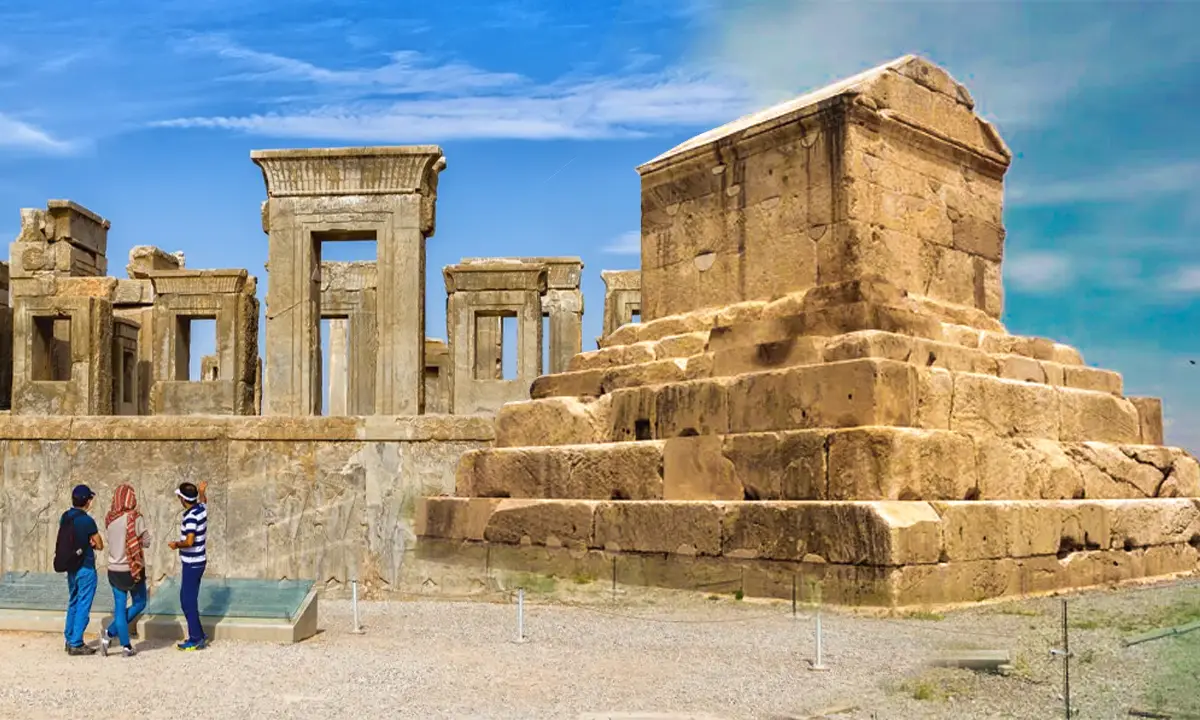Discover Avicenna Mausoleum - Prime Location in Hamadan's Historical Sites
![]() Author : shiva | Date : Sunday 21 July 2024 14:24
Author : shiva | Date : Sunday 21 July 2024 14:24
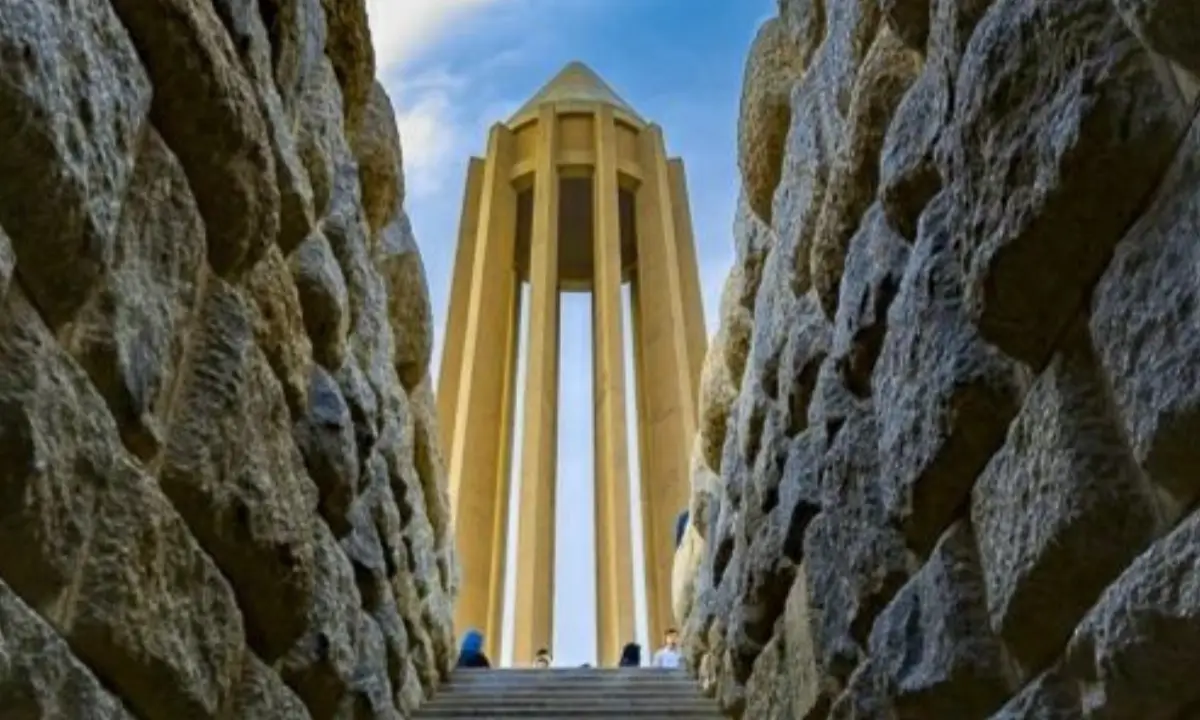
One of the notable landmarks in Hamadan is the Avicenna mausoleum, a distinguished symbol of the city, celebrated for its historical and scientific significance. Situated in a central square of Hamadan, the mausoleum captivates with its striated columns and granite stones, marking a prominent spot in the cityscape.
Who was Ibn Sina?
Ibn Sina, also known as Avicenna, was born in 980 AD in Bukhara and passed away in 1037 AD in Hamadan. An eminent figure, he was a physician, poet, philosopher, and a pivotal scientist. His works, notably the "Book of Healing" and "The Canon of Medicine," have left a lasting legacy in medical science.
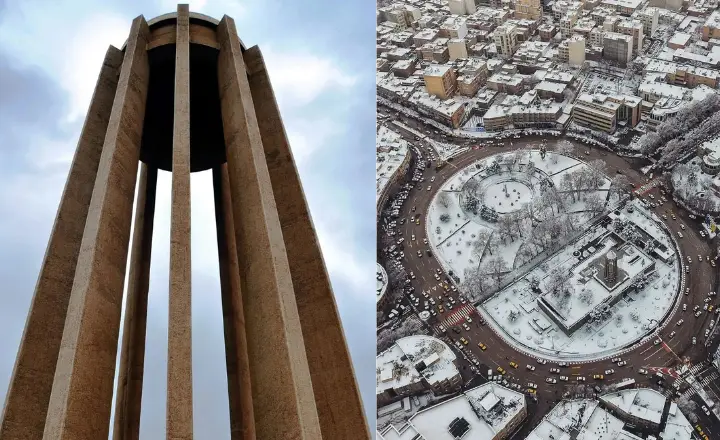
His prolific output, encompassing around 250 works, covered a broad spectrum of knowledge available during the Middle Ages. Despite the loss of some of his significant works during historical upheavals, Ibn Sina's contributions remain foundational in the annals of science, earning him recognition as one of the most illustrious figures in the realm of historical scholarship.
✔️Read More : Travel to Hamadan; the Capital of Asian Tourism
Abu Ali Sina old tomb
Tomb of abu ali is located where was once the home of Abu Saeed Dakhdok, a friend of Ibn Sina who was buried next to him. This place was located beside the city at the time, and by the end of the 13th century AH a small chariot was built on their graves as a tomb.
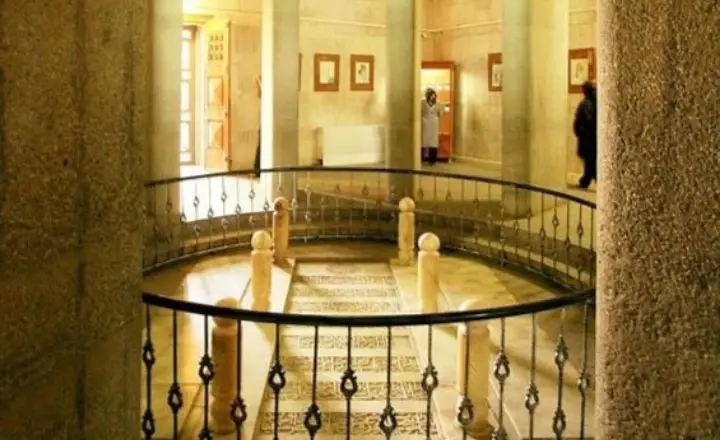
When the foursquare was destroyed over time, one of the Qajar princesses was trying to renew the tomb of abu ali and repair it. According to his orders, instead of the old four-legged, a dome was made of brick, and two stones, one on the grave of Avicenna and the other on the Abu Saeed grave.
Avicenna Mausoleum architecture
After that, the members of the Iranian National Monuments Association decided to build the Avicenna mausoleum based on the old and new architecture. Among the designs presented, the one inspired by the design of Gonbad-e Qabus was chosen.
Although the architectural style of the two buildings is very different. For example, Gonbad-e Qabus has 10 columns but the tomb of abu ali sina has 12 columns. These twelve pillars represent the 12 pieces of knowledge that Ibn Sina had mastered.
After the destruction of the old tomb and the opening of the grave of Ibn Sina and Abu Saeed, the skull and the remaining parts of Abu Ali Sina and Abu Saeed's bones with the presence of trusted and reliable people, after the preparation of proceedings, were laid in special boxes and sealed after the construction Avicenna mausoleum, to be buried again.Avicenna Mausoleum library
Another work that the Abu Ali Sina Committee did to commemorate him was the establishment of a library near his shrine in the tomb of abu ali. In this case, the opinion of the members of the association was that, since Abu Ali Sina was a global philosopher and scientist, all the scientific circles of the world needed to participate in the establishment of his library.
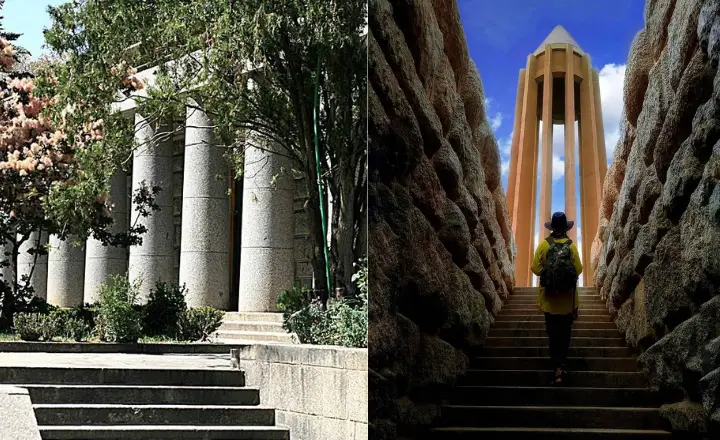
Hence, in the year 1329 SH, by making a statement in Persian, Arabic, French, and English, it was requested from all authors, cultural institutions, and Iranian and foreign publishers send books to the National Society for National traces.
As a result, various scientific, historical, and literary books, as well as books about Avicenna or its great writings, were sent from various countries to the National Collections Society. Currently, 4342 volumes of Persian and Arabic books are available in the
tomb of abu ali, with thirty volumes of them being linear books, and some of them are very exquisite and noteworthy. In addition, there are 590 books in French, English, German, etc. in the library.
✔️Read More : Ali Sadr Cave | water cave in Hamadan, Iran
Key Aspects of the Avicenna Mausoleum
- Architectural Design: Marvel at the structure's distinctive columns and use of granite, a testament to the region's architectural heritage.
- Legacy of Avicenna: Gain insight into the life of Avicenna (Abu Ali Sina), whose contributions to science and philosophy are commemorated here.
Visiting the Tomb of Abu Ali Sina
- Cultural Insight: Understand the impact of Avicenna's contributions on modern science and philosophy, making the mausoleum a bridge between past and present knowledge.
- Tranquil Setting: Enjoy the peaceful ambiance surrounding the mausoleum, offering a moment of reflection on the historical significance of the site.
Last Word
The Avicenna Mausoleum is more than just a monument; it's a beacon of enlightenment, celebrating the legacy of one of history's greatest polymaths, Abu Ali Sina (Avicenna). Nestled in the heart of Hamadan, this site transcends time, connecting visitors with the rich tapestry of intellectual achievements and cultural heritage. Whether you're drawn by the allure of historical architecture or the pursuit of knowledge, the Avicenna Mausoleum offers a unique glimpse into the past, inspiring all who walk its grounds.
FAQ
Questions and answers about the Hamadan Avicenna Mausoleum:
What are the opening hours of the Avicenna Mausoleum?
The mausoleum typically welcomes visitors daily, with hours varying by season. It's advisable to check the latest timings before planning your visit to ensure access.
What are some must-visit nearby attractions?
Ganjnameh Inscriptions: Just a short drive from Hamadan, these ancient inscriptions offer a peek into the Achaemenid Empire's history.
Alavian Dome: A stunning example of Islamic architecture, known for its intricate brickwork and stucco decorations, located within Hamadan itself.
Can I shop for souvenirs near tomb of abu ?
Handicraft Markets: Hamadan is famous for its ceramics and pottery. The markets near Avicenna Mausoleum are ideal for picking up unique handcrafted souvenirs.
Bazaar e-Mosalla: A short distance from the Mausoleum, this bazaar offers traditional Iranian crafts, textiles, and spices, allowing you to take a piece of Hamadan home with you.



.webp)

